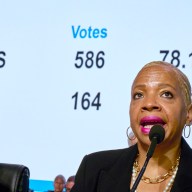Many of us have spent decades trying to address the barriers to women in education and in business. And in spite of the progress, there is more to be done.
At the same time, the gender gap cuts both ways. Boys are less likely than girls to meet provincial standards in reading. Boys account for the majority of suspensions. And boys are more likely than girls to drop out of high school in Canada (12.2 per cent versus 7.2 per cent in 2004-05).
On a national level, the social economic status of a school is the strongest predictor of reading performance, followed by the social economic status of the student followed by gender, according to a 2000 OECD study. This suggests that boys, regardless of their background, do better in well-resourced schools, reinforcing the importance of investment in education.
The costs to all Canadians of educational underperformance are immense. In 2004, the unemployment rate among people aged 25 to 44 who did not have a high school diploma was 12.2 per cent, almost twice the rate of high school graduates.
In a bold move announced this week, the Toronto District School Board’s new director Chris Spence announced a strategy that includes a “Male Leadership Academy” for boys as well as male-friendly demonstration classrooms aimed at boosting boys’ school performance.
Research by the Canadian Centre for Knowledge Mobilization in B.C. concluded that, overall, studies tend to show that single-sex schools serve girls better than boys. However, the majority of studies examine private schools dominated by students from wealthy well-educated families.
We also know there are too few male role models in the early grades.
An excellent teacher can inspire any kid to love Shakespeare, but boys and girls do have different preferences. Same-sex classes in particular subjects allow gender specific content and teaching methods.
Spence is drawing on his previous successes in the development of Boys 2 Men, Project G.O. (Girls Only) and the Read to Succeed Program, which motivates and teaches boys to read.
While we should heed cautions against segregating and fragmenting our schools, and we need rigorous evaluation and accountability, we do need to try new approaches to adapt the curriculum, teaching methods and learning environment to the particular needs of boys and girls.
















